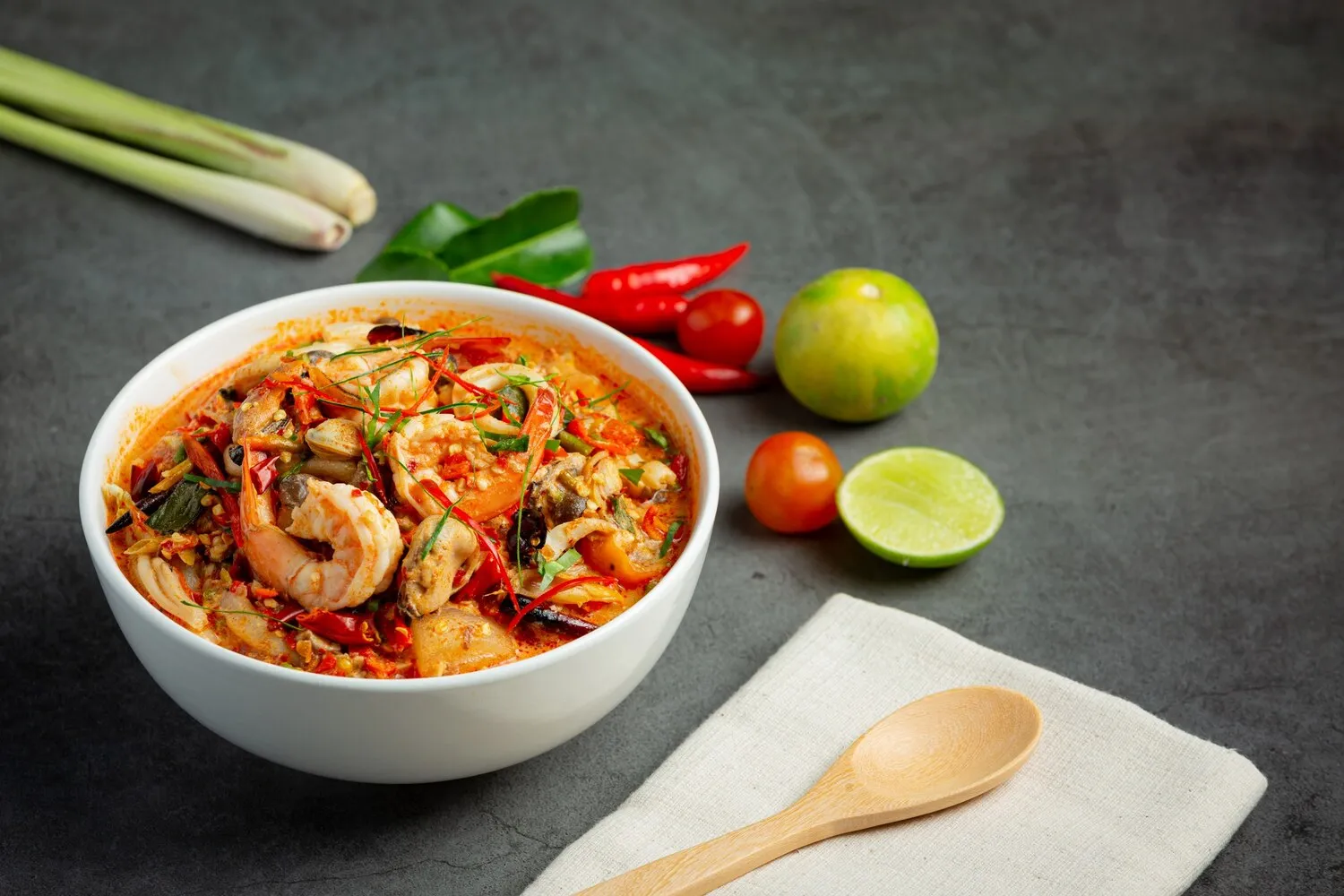
Pho Tai
Rice noodle soup with rare beef.
Nutrition Facts
* The % Daily Value (DV) tells you how much a nutrient in a serving of food contributes to a daily diet. 2,000 calories a day is used for general nutrition advice.
Pho's origins are debated, with theories pointing to both Chinese and French influences during the French colonial period in Vietnam. The name 'Pho' itself may be derived from the French 'pot-au-feu'. Northern Vietnam is widely considered the birthplace of Pho, with its popularity spreading south over time.
Pho is more than just a dish in Vietnam; it's a cultural icon representing family, comfort, and national pride. It's a popular street food enjoyed throughout the day, particularly for breakfast and late-night meals.
Street Food Culture
Pho is deeply ingrained in Vietnamese street food culture. You'll find countless stalls and small restaurants serving Pho from early morning until late at night, often with communal tables and a lively atmosphere.
Family Tradition
Pho is often a dish prepared at home, with family recipes passed down through generations. The preparation of the broth is a time-consuming process that often involves multiple family members.
National Identity
Pho is considered one of Vietnam's national dishes and is often featured in tourism campaigns and cultural events. It represents the country's rich culinary heritage and is a symbol of Vietnamese identity.
Pho Tai is defined by its fragrant broth, fresh herbs, and tender rare beef. The flavors are complex and aromatic, offering a balance of savory, sweet, and spicy notes.
The broth is typically made by simmering beef bones (sometimes with chicken or pork bones), charred onions, ginger, and spices like star anise, cloves, cinnamon, and coriander seeds for many hours. The 'Tai' refers to the thinly sliced rare beef (usually eye round) that is cooked by the heat of the broth when served. Rice noodles (banh pho) provide a chewy texture, while fresh herbs like cilantro, mint, Thai basil, and scallions add brightness. Common toppings include bean sprouts, lime wedges, chili sauce, and hoisin sauce, allowing diners to customize the flavor to their preference.
Broth Quality
A good bowl of Pho hinges on the quality of the broth. Look for a clear, aromatic broth that's rich in flavor. If the broth is cloudy or lacks depth, it's likely not been simmered long enough.
Customization
Don't be afraid to customize your bowl. Add plenty of fresh herbs, bean sprouts, and squeeze lime juice to your liking. Experiment with different amounts of chili sauce and hoisin sauce to find your perfect balance of flavors.
Eating Etiquette
Traditionally, Pho is eaten with chopsticks and a spoon. Use the chopsticks to lift the noodles and meat to your mouth, and the spoon to scoop up the broth.
Enjoy it hot!
The rare beef will continue to cook in the hot broth, so eat it soon after it is served.
Explore additional Soup dishes and restaurants
Explore SoupDiscover top dining spots and culinary experiences in Ajax.
Explore AjaxLearn more about the food culture, restaurant scene, and culinary heritage of Canada.
Explore Canada